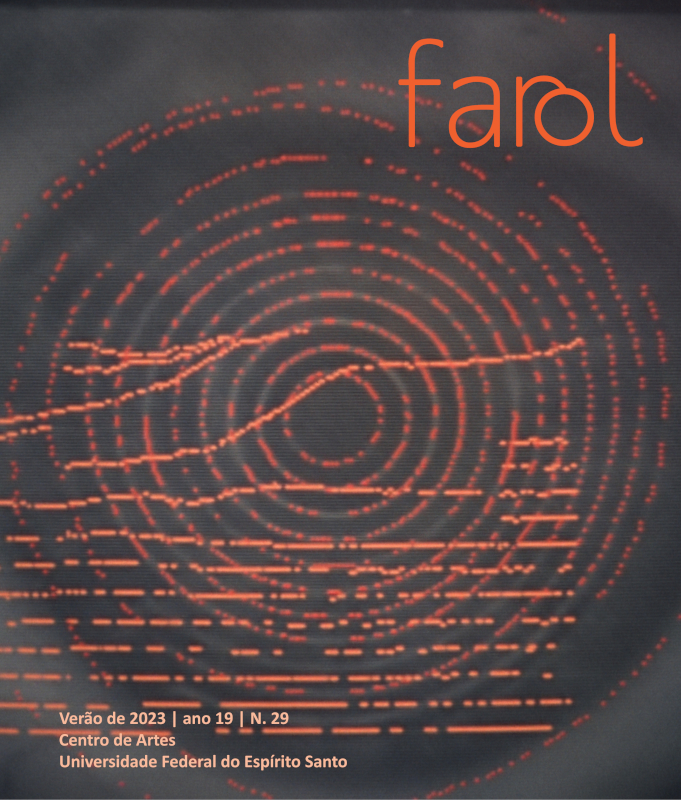Anger of images
control, resistance, war
DOI:
https://doi.org/10.47456/rf.v19i29.43539Keywords:
imagem, guerra, novas mídias, arte contemporânea, dossiê temáticoAbstract
We recognize that an image is never unique, but always multiple, and its meanings are only revealed in the chain of relationships to which it is part based on careful views. In the arts of moving images, we can mention the multiplicity of cinema and video fields. At its dawn, analog cinema, as we know, constituted movement by illusion, through a succession of frames chained one next to the other, or above and below, if we look at a celluloid film vertically, to then suggest the location of bodies and the constituent elements of the scenes. In view of this, photographic and filmic seeing were modulated in a relationship of capture and montage. Whether by capturing images and then assembling them in successive shots or dismantling pre-existing images to later reassemble them with the intention of giving them a new vitality, a new body to belong to.
Downloads
References
ARÇARI, André Nascimento. Dominique Gonzalez-Foerster: Chambres, Atomic Park, Desert Park, Empty Park. In: Arte além da arte: Anais do 2º Simpósio Internacional de Relações Sistêmicas da Arte. Porto Alegre: Universidade Federal do Rio Grande do Sul, 2020, pp. 153-164.
BELLOUR, Raymond. Entre-imagens - foto, cinema, vídeo. Campinas: Papirus, 1997.
DIDI-HUBERMAN, Georges. Remontagens do tempo sofrido. O olho da história, II. Belo Horizonte: Editora UFMG, 2018
DUBOIS, Phillipe. Cinema, vídeo, Godard. São Paulo: Cosac & Naify, 2004.
FOSTER, Hal. Vision quest: the cinema of Harun Farocki. In: Artforum, v. 43, n. 3, 2004, pp. 156-161.
FOUCAULT, Michel. Vigiar e punir: nascimento da prisão. Petrópolis: Vozes, 1987.
LEFORT, Claude. The Polítical Forms of Modern Society: Bureaucracy, Democracy, Totalitarianism. Cambridge: The MIT Press, 1986.
MELENDI, Maria Angelica. O que resta da ditadura. Transgressão na arte de América Latina entre dois séculos. Belo Horizonte: Atual, 2016.
VIRILIO, Paul. Guerra e Cinema. São Paulo: Boitempo, 2005.
Downloads
Published
How to Cite
Issue
Section
License
The authors of works submitted to Revista Farol authorize their publication in physical and electronic media, solely for academic purposes, and may be reproduced as long as the source is cited. They attest to their originality, authorship and originality.





